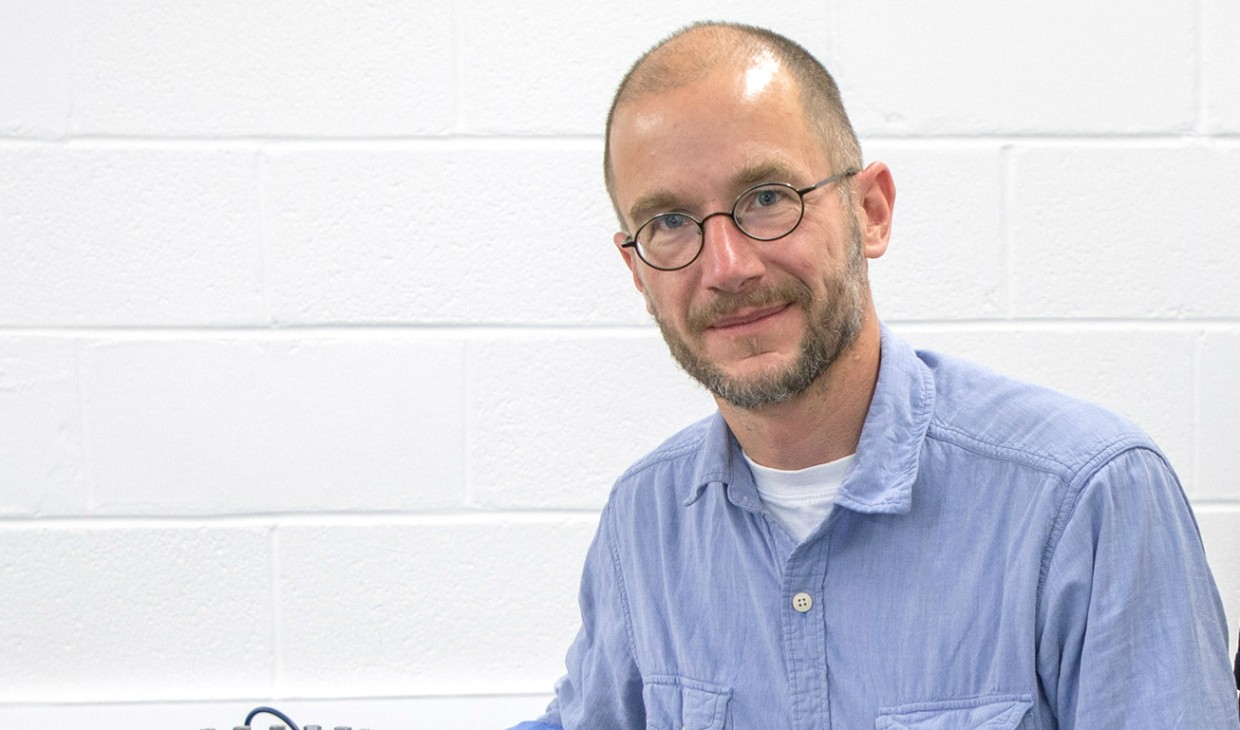Space mission involving Stirling scientists reports findings
A Japanese-led space mission – involving a University of Stirling scientist – has reported its initial findings from its investigation of asteroid Ryugu.
/filters:format(webp)/filters:no_upscale()/prod01/cdn/media/stirling/news/news-centre/2018/10/outerspace-1920X689.jpg)
A Japanese-led space mission – involving a University of Stirling scientist – has reported its initial findings from its investigation of asteroid Ryugu.
In a series of papers published in the prestigious Science journal, the international team behind the Hayabusa2 mission show that Ryugu was formed by breakaway rocks from a bigger asteroid.
The experts also discovered a chemical signature on Ryugu that can indicate the presence of water; that the asteroid’s shape is a sign that it spun much faster in the past; and that it is one of the darkest bodies in the solar system.
Dr Axel Hagermann, Associate Professor in Biological and Environmental Sciences at the University of Stirling, is the only UK-based researcher working on the mission.
He said: “The publishing of our initial findings marks an important milestone in this mission. These results – and our ongoing work – will help us to understand the origin and evolution of the solar system, particularly relating to water.”

Dr Axel Hagermann is the only UK-based scientist working on the Hayabusa2 mission.
Presenting the findings at the 50th Lunar and Planetary Sciences Conference in Texas, the team described Ryugu as a “rubble pile”, with its porosity – a measure of the voids present within the object – measuring 50 per cent. They said that this – along with the large boulders on its surface – suggested that Ryugu may have broken away from two larger asteroids, likely Polana and Eulalia.
They also found minerals containing hydroxyl groups, which can indicate the presence of water: however, they said further research was required to provide confirmation.
In addition, the team suggested the asteroid’s spinning top shape “was formed from a past rapid rotation”, and noted that it was surprisingly dark, which could partly be due to exposure of the rocks to the space environment.
Discovered in May 1999, Ryugu – only 870m in diameter – is currently more than 300 million kilometres away from Earth. It is a primitive, C-type asteroid – meaning its composition includes water and organics – and is part of the Apollo group of asteroids, regarded as potentially hazardous due to their close proximity to Earth.
Hayabusa2 – launched in December 2014 – is the first mission to an asteroid of this nature and only the second to return a sample from an asteroid. Experts believe it will provide an important insight into conditions in the early solar system.
The 600kg spacecraft – which features ion engines, as well as state-of-the-art guidance and navigation technology, antennas and attitude control systems – is flown by the Japan Aerospace Exploration Agency, in collaboration with the German Aerospace Centre and the National Centre for Space Studies in France.
It arrived at Ryugu in June 2018 and observed the asteroid from a distance before deploying two Japanese rovers and the Mobile Asteroid Surface Scout (MASCOT) lander.
Dr Hagermann is co-investigator on MASCOT’s Thermal Infrared Imager, which studies the temperature and thermal inertia of the asteroid. He supports data analysis by recreating the thermal conditions of the asteroid surface in the Planetary Ices Laboratory at Stirling.
